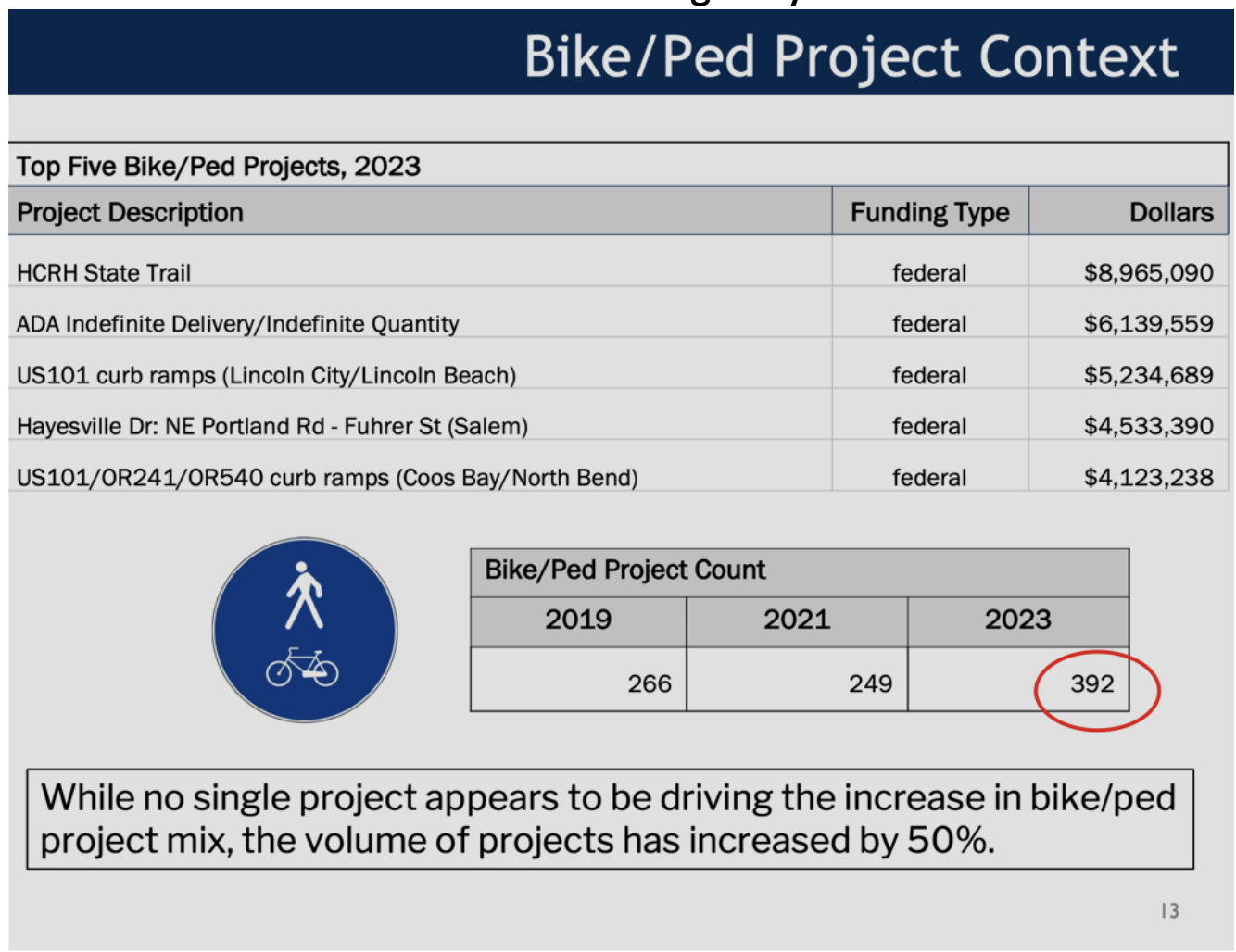An arcane study first undertaken by the Oregon Department of Transportation in 1937 is suddenly the subject of unprecedented scrutiny. The 2023-2035 Highway Cost Allocation Study (HCAS), published last year for the 23rd time and authored by research firm ECOnorthwest, is completed every two years in order to determine if road users are paying their fair share of taxes based on what ODOT spends on highways. If the balance is off, lawmakers and a study review team can use HCAS findings to lobby for changes in vehicle taxes and fees.
Its findings never made much news until now, because for the first time ever, it has revealed a significant imbalance.
ODOT splits vehicles into two main classes: light and heavy (over 10,000 pounds, which is essentially all large commercial freight trucks). The past two HCAS reports (completed in 2021 and 2023), have raised eyebrows because the numbers show light vehicle operators are not paying enough for what ODOT spends on them, and heavy vehicles operators are paying too much (see slide at right). “For the 2023-25 biennium, under the existing tax structure and rates,” reads page 45 of the study, “light vehicles are expected to underpay their fair share by 12% and heavy vehicles are expected to overpay by 32% relative to the projected distribution of project spending.”
The numbers validate concerns from trucking advocates who say they’re getting fleeced by taxes (that went up as part of the 2017 transportation funding package) and they’ve used the study to justify a lawsuit against ODOT filed earlier this month asking for a refund.
Why am I sharing this on BikePortland? Because the HCAS findings will likely have strong political impacts and ODOT spending on bicycle-related projects have already been singled-out as one of the reasons for the imbalance.

 Note the increase in Bike and Ped costs in 2023.
Note the increase in Bike and Ped costs in 2023. ODOT slides.
ODOT slides.What ODOT chooses to spend its highway fee and tax revenue on (the “investment mix”) is how the HCAS determines whether or not road users are paying their fair share. The economists who work on the HCAS assign each type of expenditure — whether it’s highway maintenance, administrative and engineering overhead, or bike and pedestrian projects — a specific allocation percentage based on its benefit to light or heavy vehicle users.
What the latest HCAS shows is that ODOT has spent more money on things that benefit light vehicles owners, while the amount of taxes and fees paid by those vehicle owners has gone down — while the inverse is true for heavy vehicle owners.
On page 58 of the study, its authors write,
“Most notable is the shift toward increasing expenditures on bike and pedestrian-related projects… Bike and pedestrian investments have been increasing over recent years and the current HCAS includes nearly 400 bike and pedestrian projects, compared with approximately 250 projects in each of the previous two biennia.”
Given the oft-politicized transportation debates at ODOT and among trucking advocates at the Oregon Legislature, it’s easy to see how this factoid will be leveraged. And what’s at stake on a larger scale is how lawmakers respond to the current HCAS imbalance. Will they see it as a reason to cut fees on large trucks? Scale back investment on bike and ped projects? Charge more for car drivers and other light vehicle owners?
According to Joe Cortright, a Portland-based economist and co-founder of No More Freeways, blaming the imbalance on bike and pedestrian projects is one of three major “flaws” in the latest HCAS.
In a new post on City Observatory, Cortright says the imbalance is primarily caused by ODOT’s decision to spend less on maintenance (like repaving and pothole repair) and more on freeway widening projects in the Portland metro area. This is because the planning and engineering costs for freeway expansion projects (which have gone up in recent years) count toward light duty vehicles in the HCAS formula, and maintenance projects (which have gone down) count toward heavy vehicle expenditures. Spend more on maintenance and repaving roads, and less on expanding freeways, Cortright says, and, “ODOT could reduce or resolve the cost- responsibility problem.”
Cortright also thinks ODOT’s use of federal funds in HCAS project expenditure calculations goes against Oregon’s Constitution. “Nothing in the law or constitution directs or authorizes including federal funds in the HCAS calculations,” he writes. ODOT also tallies major federal funding for bike and ped projects in the HCAS (see slides above), which Cortright says is not only illegal, but further tilts the balance of blame.
Findings from the HCAS have already led to the aforementioned lawsuit by the Oregon Trucking Association. And now two Republican lawmakers in Salem have sponsored bills to decrease the weight-mile tax charged to trucks. House Bill 4165, sponsored by Rep. Shelly Boshart Davis (R-15)*, requires ODOT to complete a report and recommend legal changes that would balance the “transportation responsibility cost” between light and heavy vehicles. Senate Bill 1519, sponsored by Senator Brian Boquist (R-12), seeks to lower the weight-mile tax, issue refunds to taxpayers who overpaid, and would set specific limits on how highway funds could be spent.
Both bills have their first public hearing in front of the Joint Committee on Transportation this Thursday (2/15) at 5:00 pm.
*Rep. Boshart Davis is a member of the family that owns Boshart Trucking, Inc.
— Learn more about the HCAS in the interview with Cortright below, which I recorded last week.



